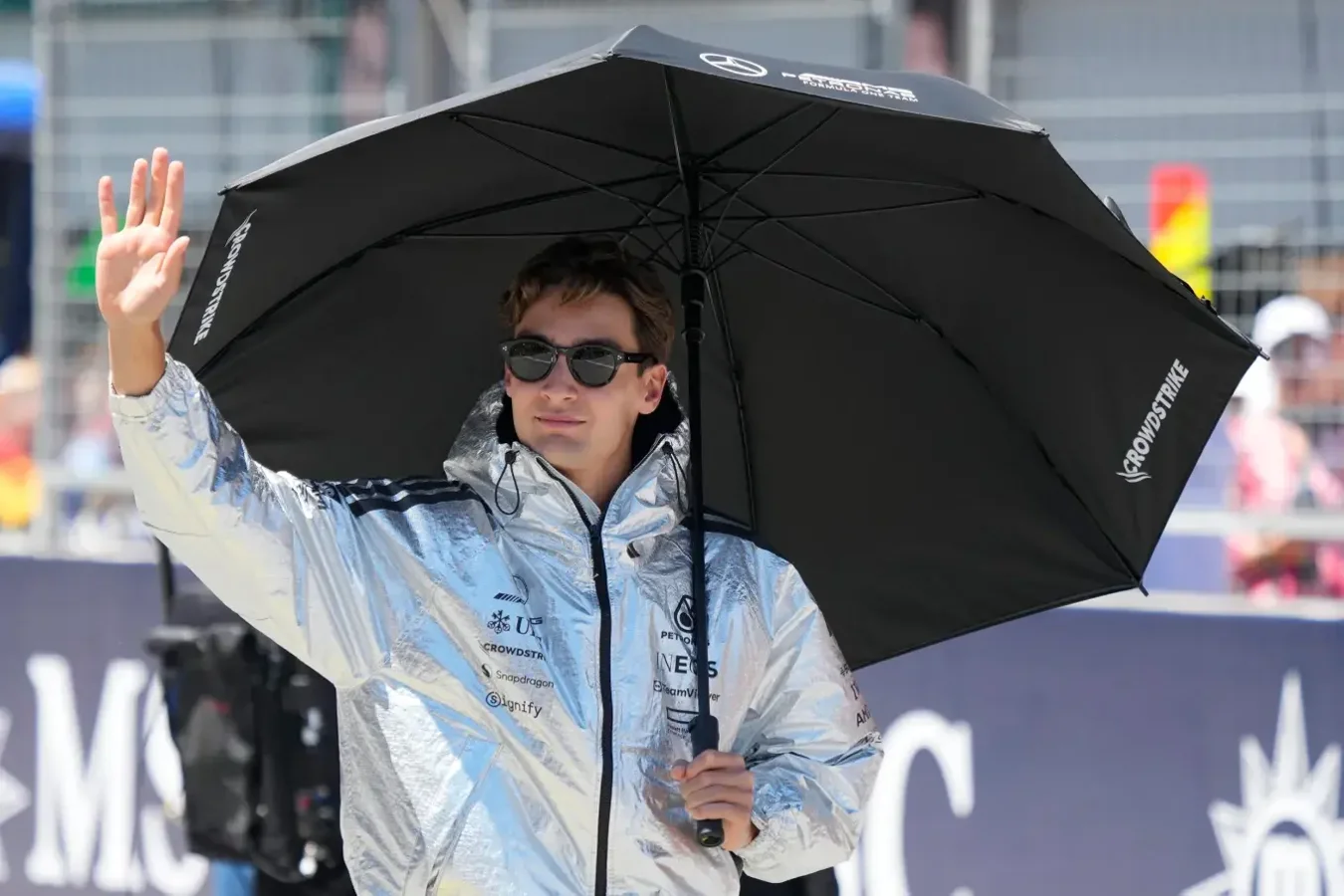Mercedes driver George Russell believes the redesign of the Singapore Grand Prix circuit has enhanced the quality of racing and, alongside the increased pit lane speed limit in 2025, could lead to more diverse race strategies during this weekend’s event. The changes to the Marina Bay Street Circuit and new regulations are expected to make the race more dynamic and tactically engaging.
Impact of Circuit Changes on Race Dynamics
Ahead of the race weekend, Russell shared his perspective on the modifications made to the Singapore Grand Prix track in 2023. He highlighted the significance of removing the complex of corners in the final sector, which previously made the circuit contain over 20 turns. According to Russell, this overhaul has created a smoother flow throughout the track.
He explained,
“I think the biggest thing for Singapore that’s improved the race is removing the last sector corners. Now that back straight, I mean, as drivers, you never want to remove corners. But I think before it had 20-something corners, and it was too much.”
He added that the new layout offers a better rhythm and that drivers generally support keeping the circuit in this revised form rather than reverting to its previous configuration.
Pit Lane Speed Limit Increase and Strategy Implications
The adjustments to the pit lane speed limit—from 60 km/h to 80 km/h—are particularly important, as they reduce the time lost during pit stops and could encourage teams to consider two-stop strategies more seriously. Russell noted the previous long pit lane transit time often led to a straightforward one-stop race.

“In the past, it was always a one-stop because the pitlane took so long,”
Russell said.
“I think it’s four or five seconds shorter now, a pitstop with this 80km/h limit. So maybe it goes more towards two. But recently, a lot of races have been a clear one-stop.”
The goal behind this new limit is to inject more tactical variation into the event, allowing teams to adapt multiple strategies based on changing race conditions.
Marina Bay Circuit Revamp Details
The reprofiled Marina Bay Street Circuit saw the removal of the Turn 16 to Turn 19 section before last year’s race, replaced by a long straight leading into the final corners. This reduction brought the total number of turns down to 19. To complement this, a fourth DRS (Drag Reduction System) zone was introduced in 2024 between Turns 14 and 16, aimed at enhancing overtaking opportunities on the fast part of the track.
These updates aim to balance the circuit’s technical challenge with greater chances for action-packed racing, which has often been difficult on street tracks known for tight corners and limited passing spots.
Challenges and Opportunities in This Year’s Night Race
The Singapore Grand Prix remains one of the most demanding races on the Formula 1 calendar, conducted at night over 62 laps under artificial lights. The combination of heat, humidity, and urban surroundings tests driver endurance and car performance alike. The recent circuit modifications and higher pit lane speed limit could disrupt the usual processional nature of this event, where track position typically dominates race outcomes.
Russell hinted at further variables that could spice up the weekend, notably weather conditions. He said,
“So yeah, I think the rain will be the next thing that will spice it up.”
George Russell, Mercedes
Rain has historically played a dramatic role in Singapore races, adding unpredictability to strategy and driver skill displays.
Looking Ahead: Potential Evolution of the Singapore Grand Prix
With the circuit changes and new pit lane regulations now in effect, the Singapore GP is positioned to offer more varied and exciting racing experiences. Drivers like George Russell anticipate that these developments will bring deeper strategic complexity to forthcoming races, possibly shifting the event from a processional contest to a more tactical battle on multiple fronts.
Organisers and teams will closely monitor how the higher pit lane speed limit influences tire management and pit stop timing, while fans can expect a more intense spectacle as teams explore two-stop race plans and adapt to the revised track layout. Weather remains an unpredictable element that could further shape the weekend’s dynamics.
This revamped Singapore Grand Prix could set a new precedent for street racing in Formula 1, combining technical precision, strategy variation, and enhanced overtaking chances into a compelling night race spectacle.
